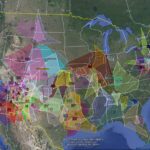6 Preparing your camera
We recommend preparing your camera and setup during daylight hours. If all required material were correctly ordered, you should have the following items available:
- Watec 902H Ultimate 1/2 inch PAL
- Pentax 12mm f/1.2
- C-CS Mount adapter
- Ez-Cap Frame grabber
- CCTV video cable
- BNC-cinch adapter
- Adapter 12V (be sure to buy one of good quality)
- A mount and protection for use outdoors, if applicable (optional)
- A timer if you wish to run your set up automatically (optional)
- An auto iris, if you want to protect your Watec against direct sunlight (not shown & not recommended).

Figure 15 – A visual overview of all the items required.
6.1 First step: Prepare the Pentax 12mm f/1.2 lens

Figure 16 – Preparing the lens.
- Loosen or remove the small screws (A) on the diaphragm ring and on the focus ring (normally 3 screws on each ring). Remove one of these small screws (A) on each ring and replace it by the larger adjusting screws (B), delivered together with the lens (Figure 16).
- Fix the diaphragm at 1.2 and make sure that the focus ring rotates smoothly nearby “∞”.
- Connect the C-CS Mount adapter on the Watec 902H2 Ultimate camera and place the lens on the adapter.
- Put the complete device on a photo tripod or any other stable carrier. Pay attention that the camera should be kept well fixed and protected for slight vibrations.
6.2 Second step: Set the switches on the Watec 902H2
BLC (Back Light Control): 1 and 2 ON, 3 OFF. This setting sets the backlight to the full chip and not just a portion of it (Figure 17).
 Figure 17 (left) and 18 (right) – The Back Light Control setting and the shutter speed. |
 |
Shutter speed, to 8 (Figure 18).
Attention: The best thing to use is a plastic screwdriver. Using a metal screwdriver for these settings can easily damage the main board inside the camera. Be careful with any metal screwdriver!
AGC (automatic gain control) at LO (Figure 19).
In the online manual for single CAMS you may find recommendations to use MGC (Manual Gain Control) and to use the screw at MGC to adjust from L to H to obtain slightly more stars for calibration and to detect more meteors. However the procedure is rather difficult as the right balance between more gain and background noise is not much different from what the AGC at LO produces.
Gamma: OFF (Figure 20).
The higher the gamma setting, the higher the noise. In addition, the higher the gamma setting, the lower the number of brightness levels, which is not good for getting accurate photometry measurements.
 Figure 19 (left) and 20 (right) – AGC setting and Gamma setting. |
 |
6.3 Third step: connect the cables
Connect your video cable to the Watec 902H Ultimate, as well as the power plug from the 12V power adapter. Avoid using too long cables; make sure your power source provides stable 12V (Figure 21).

Figure 21 – Connection of video cable and power supply.
Connect the other end of your video cable with the small NBC-cinch adaptor to the yellow plug of the EzCap Frame grabber.
Plug the Power Adaptor to some electricity plug.
Connect the USB of the EzCap into some USB connection on your PC. Now you are ready to test your set up at the night sky.
Some people operate their camera without any protection from inside, like in the opening of a Velux window. Others install their camera in special outdoors protection housing. With your camera tested and focused, you may place it into some protection housing as shown in Figure 22. Make sure to fix the cables very well!

Figure 22 – Outdoors the camera can be built in a standard camera housing used for surveillance.
 Figures 23 and 24 – Examples of a simple indoors installation and an outdoors set up. At left four CAMS as installed in Mechelen (B) and CAMS 351-352-353-354 in Ermelo (Nl). |
 |

Figure 25 – The CAMS site of Piet Neels at Ooltgensplaat (Nl) with CAMS 340-341-342-343-344-345-349 and 840.
 |
 |
| Figures 26 and 27 – At left Robert Haas and Paul Roggemans installing CAMS 804-805 and 806 with Bart Dessoy at Zoersel (B). At right Piet Neels installing CAMS 841-842-843-844 at TerSchelling (Nl). | |

Figure 28 – Another ‘nest’ of CAMS with Klaas Jobse at Oostkapelle (Nl): CAMS 330-331-332-333-334-337-338-339.



